- JST Home
- /
- Strategic Basic Research Programs
- /
 CREST
CREST- /
- Research Director/
- Creation of an innovative quantum technology platform based on the advanced control of quantum states/
- [Quantum Technology] Year Started : 2018
[Quantum Technology] Year Started : 2018
Keiji Ono
Room-temperature operation spin qubit based on silicon technology
Research Director
Keiji Ono
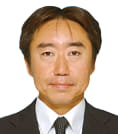
Senior Research Scientist
Cluster for Pioneering Research
RIKEN
Collaborator
| Takahiro Mori | Research Team Leader Semiconductor Frontier Research Center National Institute of Advanced Industrial Science and Technology |
| Satoshi Moriyama | Professor School of Engineering Tokyo Denki University |
Outline
By introducing a deep level into a tunnel field effect transistor (TFET) made of silicon technology, we realize a spin qubit operating stably at room temperature. We will reproduce the electric detection magnetic resonance of a single electron spin which can only be realized at the extremely low temperature so far at room temperature and apply it to a high sensitivity magnetic sensor utilizing the steep magnetic field response near the resonance. We aim to realize a room temperature operating single spin element based on silicon technology during the research period.
Yasuyuki Ozeki
Highly sensitive molecular imaging with quantum-optical sources
Research Director
Yasuyuki Ozeki
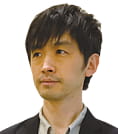
Professor
Research Center for Advanced Science and Technology
The University of Tokyo
Collaborator
| Masato Yasui | Professor School of Medicine Keio University |
| Shinji Yamashita | Professor Graduate School of Engineering The University of Tokyo |
Outline
The purpose of this project is to drastically improve the performance of the molecular imaging method based on stimulated Raman scattering (SRS) through the integration of quantum optics, laser engineering, and life science. It aims to realize high-sensitivity visualization of small biomolecules, which is one of leading-edge research topics in biology. Specifically, we will pursue the following three topics: 1. Principle confirmation of quantum-enhanced SRS microscopy. 2. Realization of multi-wavelength quantum-enhanced SRS microscopy. 3. Biological applications of quantum-enhanced SRS microscopy.
Kentaro Somiya
Manipulation of an optomechanically coupled oscillator using a quantum filter
Research Director
Kentaro Somiya

Associate Professor
School of Science
Tokyo Institute of Technology
Collaborator
| Kentaro Komori | Assistant Professor Graduate School of Science The University of Tokyo |
| Hiroki Takahashi | Associate Professor Experimental Quantum Information Physics Unit Okinawa Institute of Science and Technology Graduate University |
| Kazuyuki Takeda | Associate Professor Graduate School of Science Kyoto University |
| Nobuyuki Matsumoto | Associate Professor Faculty of Science Gakushuin University |
Outline
An opto-mechanical coupling creates a virtual spring between distant two objects. This so-called optical spring is a useful probe for its extremely low thermal fluctuations. The utility of a conventional optical spring is limited by optical losses and its finite bandwidth. Our methods to manipulate the optical spring using a non-linear squeezer and a cryogenic micro-resonator makes it possible to overcome these limitations. A highly manipulated oscillator can be used for a macroscopic quantum measurement to explore a difference between micro- and macro-scopic measurements, a gravitational-wave telescope to enhance the signal at high frequencies, and nuclear magnetic resonance to improve the signal-to-noise ratio through the electro-mechano-optical coupling.
Naoto Nagaosa
Electronic quantum phase control in nano-scale spin structures
Research Director
Naoto Nagaosa
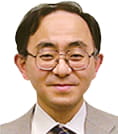
Group Director・Deputy Director
Center for Emergent Matter Science
RIKEN
Collaborator
| Fumitaka Kagawa | Professor School of Science Tokyo Institute of Technology |
| Yoshinori Tokura | Professor Graduate School of Engineering The University of Tokyo |
Outline
Based on the physical principle that the electrons feel the effective vector potential, i.e., emergent electromagnetic field (EMF), associated with the angle made by the spins in magnets, we control EMF of the order of 100-1000 Tesla in nm/nsec length/time scales and the consequent dynamics of electrons. We aim at the following 3 themes through the close collaboration between theory and experiment groups; (A)To develop the materials realizing nano-scale spin structures, (B) To explore emergent electromagnetic phenomena, and (C) To develop the emergent electromagnetic functions.
Muneaki Hase
Spatiotemporal Extreme Quantum Sensing by Using Diamonds
Research Director
Muneaki Hase
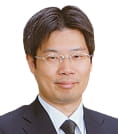
Professor
Faculty of Pure and Applied Sciences
University of Tsukuba
Collaborator
| Toshu An | Associate Professor Graduate School of Advanced Science and Technology Japan Advanced Institute of Science and Technology |
| Hidemi Shigekawa | Professor Faculty of Pure and Applied Sciences University of Tsukuba |
| Masamichi Yoshimura | Professor Graduate School of Engineering Toyota Technological Institute |
Outline
Based on a new technology for optical control of diamonds, and combining femtosecond spectroscopic technique, spatial resolution by scanning probe microscopy in an atomic scale, microfabrication of diamonds, and local measurement of materials properties by tip-enhanced Raman effect, we develop a pathway for multi-probe optical quantum technology, that is the spatiotemporal extreme quantum sensing using new optical functionalities of diamonds, which enables us to probe advanced solid-state functional elements, such as atomic later materials, as well as proteins and cells.
Michihisa Yamamoto
Quantum control of delocalized quantum bits in semiconductors
Research Director
Michihisa Yamamoto
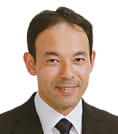
Team Leader
Center for Emergent Matter Science
RIKEN
Collaborator
| Mikio Eto | Professor Faculty of Science and Technology Keio University |
| Nobuhisa Kaneko | Prime Senior Researcher Research Institute for Physical Measurement National Institute of Advanced Industrial Science and Technology |
Outline
In this research, we manipulate delocalized qubits based on electron waves in semiconductor nanostructures using Levitons, special quasi-particles that do not suffer from decoherence. We also control interaction between localized and delocalized quantum systems to construct hybrid systems. The concepts and technologies developed for delocalized qubits should bring a paradigm shift in quantum architectures. While vast infrastructure is required in a conventional localized qubit system, hardware size can be significantly reduced and more functions are available in a delocalized quantum system.













